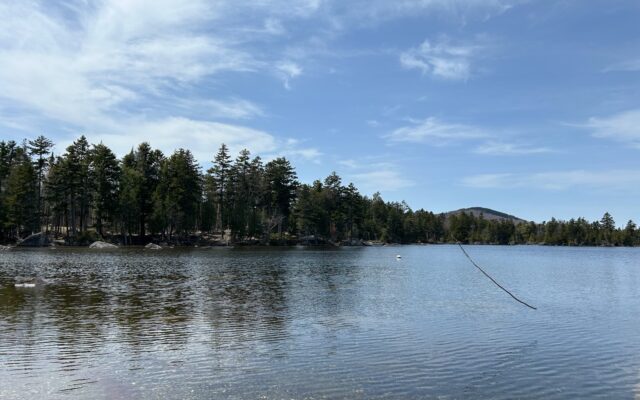
Why homes on Maine’s largest lake are prized for privacy
By Zara Norman, Bangor Daily News Staff
At the local pub in Greenville, you can expect to rub shoulders with blue-collar Mainers and avid outdoors enthusiasts. Then there are the multi-millionaires.
“There’s a bit of a divide,” said Aaron Sarnacki, who was raised in midcoast Maine and owns a lakefront property in nearby Beaver Cove on the same road as a former U.S. senator and a different, secretive buyer who is building a home after paying $8.1 million for an expansive home lot and 1,400 acres including a mountain with a beloved hiking trail that is now closed.
People of all stripes have long flocked to the Moosehead Lake region to get away from everyday life, making the region prized for its privacy for regular Mainers and high-income outsiders alike. The pandemic-era real estate market has tilted things more toward wealthy buyers, something that has been a slow trend in the region’s long tourism history.
“All these lakes and ponds, all this forest land, all this game, it started to attract people here,” said Luke Muzzy, executive director of the Moosehead Historical Society. “In the 1840s, the first hotels came into the area. … That created interest in real estate, and it’s been that way ever since.”
Housing inventory around the lake is low. It’s remote and far from large employers. But property has remained far more affordable because of that inaccessibility than that around Sebago Lake in southern Maine or the heavily developed Lake Winnipesaukee in New Hampshire, said Sally Harvey, a Greenville-based real estate agent with Realty of Maine.
The pandemic changed that dramatically. Home values in Greenville, which is by far the largest town on the lake, have increased over 75 percent. The peace, relative affordability and privacy of the area has attracted wealthy buyers who would pay top dollar for a modest camp where they could work remotely and get outdoors, according to Harvey.
“We were a safe place to get away to,” said Joe DiAngelo of Moose Country Real Estate. “Lakefront homes on Moosehead Lake that used to sell for $350,000 just aren’t there anymore. Now you’re up over half a million dollars. For a lot of them, as of late, they’re over a million dollars. So things are changing, there’s no question about it.”
High prices and low inventory has made buying a home difficult for blue-collar Mainers and outdoorsmen who have historically enjoyed the region, especially younger people like DiAngelo’s three sons who went to school in Greenville but would find it difficult to buy there now.
The market is now stabilizing a little, with homes sitting for longer and buyers not overpaying as much. But prices will never return to where they were before the pandemic, DiAngelo said.
Being “discovered” has changed Moosehead’s character, locals say. Sue Currier, who owns and operates Currier’s Flying Service in Greenville, has seen the area transform from little lumber towns into a tourist destination.
Currier’s used to mostly cater to hunters and fishermen who wanted lifts into remote areas. Access to the area has improved, and the Curriers have shifted their business to just doing scenic tours over the lake. One of the late founder Roger Currier’s passengers was the singer Jimmy Buffett, who died in 2023.
But while the housing boom has changed the region’s makeup and the cost of homes, locals say there’s actually no threat that Moosehead will be overrun and overdeveloped. History is partly the reason. The majority of the land around Moosehead was owned by lumber barons and companies like Scott Paper, Muzzy of the historical society said.
The major 2022 purchase in Beaver Cove was an outlier, although it has gotten lots of attention from locals because the buyer used holding companies to keep themselves anonymous and bought logging land that had popular hiking trails. Muzzy doesn’t worry about the region changing forever because of new buyers like this.
“You’re looking at an area larger than the size of Rhode Island that will always remain undeveloped,” he said. “The overall footprint of where development has occurred in the last 100 plus years is relatively unchanged. Never will change.”